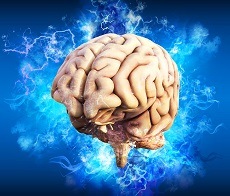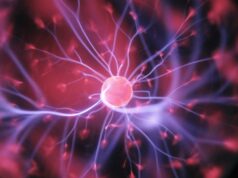 Moderate- to high-quality evidence suggests that specific neuromodulation modalities can provide effective treatments in patients undergoing stroke rehabilitation. As per a systematic review and meta-analysis, these therapeutic approaches are able to improve upper-limb motor function in both acute/subacute and chronic stroke.
Moderate- to high-quality evidence suggests that specific neuromodulation modalities can provide effective treatments in patients undergoing stroke rehabilitation. As per a systematic review and meta-analysis, these therapeutic approaches are able to improve upper-limb motor function in both acute/subacute and chronic stroke.
Writing in Neuromodulation: Technology at the Neural Interface, the authors of this study—Rustem Mustafaoglu (İstanbul Üniversitesi-Cerrahpaşa, Istanbul, Turkey) et al—say they analysed the current evidence and potential associated with electric neurostimulation in upper-limb stroke rehabilitation. Treatment modalities assessed included transcranial direct current stimulation (tDCS) and vagus nerve stimulation (VNS).
“We performed a systematic review of randomised controlled trials (RCTs) using network meta-analysis, searching the following databases: PubMed, Web of Science, Cochrane, and Google Scholar,” the authors report, “using specific keywords, from January 2010 to April 2021, and assessing the effects of tDCS or VNS combined with other therapies on upper-limb motor function and activities of daily living (ADL) after stroke.”
The study included 38 RCTs—six involving VNS versus sham and 32 involving tDCS versus sham—with a total patient population of 1,261. A pairwise network meta-analysis revealed that transcutaneous VNS (mean difference [MD]: 5.5; 95% CI [0.67–11.67]; p<0.05) and anodal tDCS (MD: 5.23; 95% CI [2.45–8.01]; p<0.05) were effective in improving upper-limb motor function. Mustafaoglu et al further detail that transcutaneous VNS, and both anodal and cathodal tDCS, were effective in improving ADL performance after stroke as well.
In addition, the “best-ranked” treatment in improving upper-limb motor function and performance in ADL after a stroke was transcutaneous VNS—as revealed by a surface under the cumulative ranking curve (SUCRA) analysis.
Finally, regarding safety outcomes, the authors report that there was “no difference” between VNS and its control interventions. This conclusion was made by measuring reported adverse events with VNS therapy (risk ratio=1.02 [95% CI=0.48–2.17; I2 =0; p=0.96]), which found the technique to be well-tolerated, with no adverse events or discomforts, in the included studies.
“Our network meta-analysis revealed that transcutaneous VNS is an effective method in improving upper-limb motor function after stroke,” Mustafaoglu et al write. “The reason for this might be that VNS may induce motor recovery by increasing the level of brain-derived neurotrophic factors and neurotransmitters, such as noradrenaline, linked to neuroplasticity and recovery after brain lesion.
“Considering the tDCS protocol, anodal tDCS was found to be the most effective treatment option compared with other active tDCS (cathodal and dual tDCS). The relative superiority of cathodal tDCS might be because most studies included in the analysis treated participants with cathodal tDCS. The other reason for this might be that cathodal tDCS results in down-regulation of overactive, non-lesioned hemisphere, which results in restoring the balance of inter-hemispheric inhibition between two hemispheres, thus promoting motor recovery.”
The authors do, however, highlight some limitations to their work, including a reduced ability to draw conclusions due to the methodological and clinical heterogeneity among the included studies, as well as potential bias of the pooled effect caused by the absence of some unpublished or missing data.
“Finally, although this network meta-analysis suggests that transcutaneous VNS is the best possible treatment for promoting upper-limb motor function and performance in ADL, a network meta-analysis is not adequate to inform treatment, and future, larger multicentre clinical trials need to be conducted to determine the effect of transcutaneous VNS on motor recovery in stroke,” Mustafaoglu et al concede.
While they conclude that transcutaneous VNS and anodal tDCS are effective in improving upper-limb motor function in both acute/subacute and chronic stroke, the authors also add that invasive VNS or dual tDCS “can be the second choice of treatment” when the goal is to improve the upper-limb motor function in these patients.













